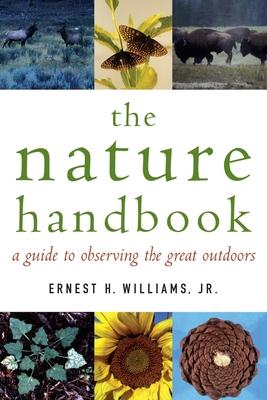
Book
The Nature Handbook: A Guide to Observing the Great Outdoors
(Write a Review)
Paperback
$44.99
All naturalists-- from birders to gardeners, hikers to environmentalists, wildflower enthusiasts to butterfliers-- will appreciate the different approach of the Handbook, even those whose interest in the natural world is just beginning to develop. Naturalists who are already well versed in one group of organisms--birders, for example--will find new explanations and patterns for their favorite group, as well as new patterns all around them that they had previously overlooked. Observations in the Handbook are arranged in the three main sections of plants, animals, and habitats. These sections are then connected through discussions of the relationship of size and shape, adaptations, distribution patterns, behavior, and diversity of life. Since the emphasis is on patterns rather than individual species, each chapter has cross-references to related topics. For example, tree-related topics such as leaf shape, treelines, and fall colors, are all discussed in different chapters even though they are related. Leaf shape is associated with trees as organisms, and therefore is in Chapter 2: Trees; treelines are most associated with mountains, so their description is in Chapter 8: Mountains; fall colors apply more broadly to forests than to individual trees, and they are discussed in Chapter 9, Forests.
Approximately 500 color photographs help make the more than 200 patterns apparent and recognizable for readers, and each pattern is accompanied by a detailed description and a brief list of sources. The book is designed to invite browsing, and readers will gain a rich ecological perspective and insight. Curiosity about the world around us is a basis for human learning; The Nature Handbook serves to aid all nature lovers in their quest for understanding the many stories that our living world provides.
All naturalists-- from birders to gardeners, hikers to environmentalists, wildflower enthusiasts to butterfliers-- will appreciate the different approach of the Handbook, even those whose interest in the natural world is just beginning to develop. Naturalists who are already well versed in one group of organisms--birders, for example--will find new explanations and patterns for their favorite group, as well as new patterns all around them that they had previously overlooked. Observations in the Handbook are arranged in the three main sections of plants, animals, and habitats. These sections are then connected through discussions of the relationship of size and shape, adaptations, distribution patterns, behavior, and diversity of life. Since the emphasis is on patterns rather than individual species, each chapter has cross-references to related topics. For example, tree-related topics such as leaf shape, treelines, and fall colors, are all discussed in different chapters even though they are related. Leaf shape is associated with trees as organisms, and therefore is in Chapter 2: Trees; treelines are most associated with mountains, so their description is in Chapter 8: Mountains; fall colors apply more broadly to forests than to individual trees, and they are discussed in Chapter 9, Forests.
Approximately 500 color photographs help make the more than 200 patterns apparent and recognizable for readers, and each pattern is accompanied by a detailed description and a brief list of sources. The book is designed to invite browsing, and readers will gain a rich ecological perspective and insight. Curiosity about the world around us is a basis for human learning; The Nature Handbook serves to aid all nature lovers in their quest for understanding the many stories that our living world provides.
Paperback
$44.99